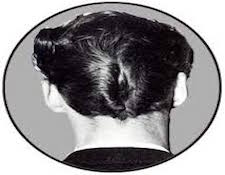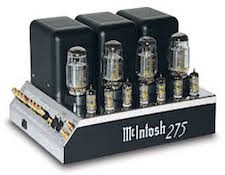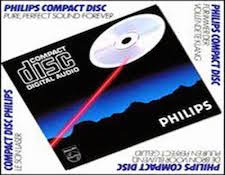It’s the time of year for saving money!
For as long as most folks can remember there have been fads associated with any era. In the 1920s there were flappers and zoot suits. We see them today in old black and white movies and by hearing the stories our grandparents love to tell.
 In the 1950s the cool guys were wearing DA or duck haircuts and the girls were wearing poodle skirts. It was not uncommon for a carload of kids — guys with long sideburns, duck haircuts and leather jackets — to go cruising in their hot rods with their girlfriends decked out in saddle shoes, poodle skirts, smacking on chewing gum and generally living the youthful life of the times.
In the 1950s the cool guys were wearing DA or duck haircuts and the girls were wearing poodle skirts. It was not uncommon for a carload of kids — guys with long sideburns, duck haircuts and leather jackets — to go cruising in their hot rods with their girlfriends decked out in saddle shoes, poodle skirts, smacking on chewing gum and generally living the youthful life of the times.
In the 1970s many fads tended to be a protest of the Vietnam War. It was a time of the peace and love generation, tie-dyed tee shirts, beads, the birth of the 8-track player and lava lamps. Modernists of the day invited society to “Turn On, Tune In, Drop Out,” a phrase actually coined in 1969 but carried over into the ’70s.
The 1980s saw music give way from the post disco era to new wave, dance pop, and the emergence of smooth jazz. It was also when the use of digital recording techniques began a sharp rise in popularity and use. And of course, who could ever forget the birth of CDs — and “perfect sound forever.”
We saw the emergence of grunge in the 1990s, energy drinks in the 2000s and more recently, things like Angry Birds and Hipsters. Regardless of the era or the fad at the time, all along the way there was recorded music. How it was delivered varies widely but it was there all the time.
 The high-end audio fad also started in the 1950s. Among the pioneers are the innovations of Frank McIntosh, Saul Marantz and Edgar Villchur . McIntosh patented his first amplifier in 1949 and in 1954 introduced what would become the hallmark of the company’s entire amplifier line: the Unity Coupling Transformer. This technology still exists today in the very McIntosh product still made by hand in Binghamton, New York.
The high-end audio fad also started in the 1950s. Among the pioneers are the innovations of Frank McIntosh, Saul Marantz and Edgar Villchur . McIntosh patented his first amplifier in 1949 and in 1954 introduced what would become the hallmark of the company’s entire amplifier line: the Unity Coupling Transformer. This technology still exists today in the very McIntosh product still made by hand in Binghamton, New York.
Saul Marantz started building amplifiers in his basement because he wanted something better than the popular hi-fi equipment of the day. His goal of making high-performance, yet affordable stereo equipment eventually made Marantz practically a household name. I bought a Marantz integrated amp in 1972, I still have it and it still works.
Just before the dawn of stereophonic music reproduction, speakers were commonly horn-based drivers housed in large enclosures. As two channel, or stereo music reproduction popularized, the size of large horn enclosures, some even as big as a modern-day refrigerator, made a home-based system very impractical.
It was about at this time that Edgar Villchur wanted a smaller, more affordable speaker that produced better bass with less distortion. He envisioned his goal through the idea of a sealed enclosure with the cabinet’s internal air volume as a suspension device. His contemporaries of the day told him he was crazy and that it couldn’t be done. Villchur paid little attention to the critics, followed his vision and created the world’s first sealed acoustic suspension loudspeaker.
 Not wanting to run his own company, Villchur tried to sell his idea with absolutely no success. In response, he, along with Henry Kloss, created Acoustic Research Company and his genius culminated in the AR3, a speaker so revolutionary in its time that today you can find one in the Smithsonian. Not too shabby for a fad. AR quickly became one of the leading speaker manufacturers in the world, commanding in the 1960s a nearly one-third market share of all high-end loudspeaker sales in the US. How many speaker companies today can claim such a disproportionate share of the market? None.
Not wanting to run his own company, Villchur tried to sell his idea with absolutely no success. In response, he, along with Henry Kloss, created Acoustic Research Company and his genius culminated in the AR3, a speaker so revolutionary in its time that today you can find one in the Smithsonian. Not too shabby for a fad. AR quickly became one of the leading speaker manufacturers in the world, commanding in the 1960s a nearly one-third market share of all high-end loudspeaker sales in the US. How many speaker companies today can claim such a disproportionate share of the market? None.
These visionary inventors, searching for something better, and following their own course, helped create what we know today as high-end audio. Obviously there were many other legendary inventors but space precludes listing each of them. They all were the very foundation of a business model; of a whole new segment of musical reproduction systems and what might charitably be termed a fad.
A history lesson, perhaps, but how does that speak in any way to the future?
Like most audiophiles, I’ve read at various times and places the opinion of those that claim our hobby is at an end — that sometime in the very near future high-end audio will cease to exist. Those claims are largely personal opinions since there is no demonstrable evidence to prove high end’s demise.
The past three to five years have yielded more changes in high-end audio than in perhaps the past couple of decades. Enthusiasts have so many options open to them right now that were not available even five years ago. Think about it, in 2009-2010 how popular was streaming as an audiophile playback system? How many wireless systems do you remember?
 We also have today a wide range of digital options. Unlike the early 1980s where the only available digital source was a CD player, today we have streaming, downloaded music stored on computers, dedicated servers, separate hard drives, on NAS drives and transmitted either wirelessly or through a physical cable and of course, we still have the CD player. With the growing acceptance of LPs with the youth market, and a dramatic increase in sales and popularity of LPs in general; everyone has the availability of various musical formats and high-performance equipment — and best of all — at arguably the lowest financial commitment ever. For perhaps the first time since our hobby’s inception, a proportionally smaller percentage of disposable income is required today for better-sounding music systems.
We also have today a wide range of digital options. Unlike the early 1980s where the only available digital source was a CD player, today we have streaming, downloaded music stored on computers, dedicated servers, separate hard drives, on NAS drives and transmitted either wirelessly or through a physical cable and of course, we still have the CD player. With the growing acceptance of LPs with the youth market, and a dramatic increase in sales and popularity of LPs in general; everyone has the availability of various musical formats and high-performance equipment — and best of all — at arguably the lowest financial commitment ever. For perhaps the first time since our hobby’s inception, a proportionally smaller percentage of disposable income is required today for better-sounding music systems.
Maybe best of all, there is growing interest from today’s youth — the very ones who just a short time ago couldn’t care less about sound quality — are now beginning to look more closely at better musical reproduction. There are a growing number of portable devices and headphones that can deliver phenomenal sound and often at a lower cost than a mid-fi system. We have smaller, multifunction devices that bring to an end the requirement of large equipment racks and floor space.
Audio enthusiasts can still spend hundreds of thousands of dollars if they wish, but the point is that it is not as necessary as it once was. We’re talking the proportional percentage of disposable income today as opposed to twenty or thirty years ago. Even Nest, the company that makes the programmable HVAC thermostat, has announced they are looking to enter the high-end audio arena and are hiring audio engineers and designers. That hardly sounds like a dying fad to me.
Throughout the past five or six decades fads have come and gone. We look back on them with nostalgia with high-end audio as the exception. It has been a part of audiophiles’ lives to some extent for a long time and while no one can tell the future, we should expect luxury sound to continue for years to come. Not too shabby for a fad.





